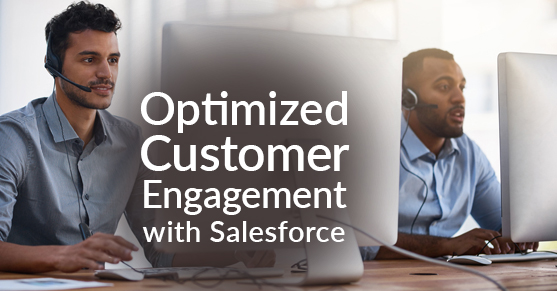Data is the lifeblood of creating an ideal customer experience, and it’s the best way to develop long-lasting relationships with returning customers. No matter what your market looks like, having concise data for customer profiles is essential to winning their trust and loyalty in your brand.
As the need for this style of customer engagement grows, we find ourselves asking, “how does a business do this?” Or, “How do companies allocate the right data to create this customer profile?” Most companies have so much data that it’s difficult to imagine creating such a profile. However, there’s a light at the end of the tunnel for modern enterprise: customer data platforms (CDP).
Salesforce Customer 360 and CDP
CDP systems offer an environment to collect customer data from disparate sources, then combine the data to create a customer vision that’s not only accurate but considerate of the customer’s interests. The need for this type of system comes with no surprise; customers are changing, and thus, the way companies market and sell to them is evolving to match their needs. With the most recent release of Salesforce’s Customer 360 system, Salesforce CDP has been added to do just that. As a new addition to the Customer 360 platform, Salesforce CDP reaches into the various disparate data sources of a company, synthesize them into clean, quality data, and begin to build up a customer profile from that data.
What do the features of Salesforce CDP do? They help companies find trends, build new clientele, expand their market, know what the customer wants before they even want it. By having clean, overarching data, CDPs offers an opportunity to attract customers in a new way and conquer the market. It provides all the benefits of a typical CDP, but with all the perks of Salesforce ingenuity and integration possibilities. Not to mention the familiar environment for users already using Customer 360 and other Salesforce products. There are several new features in Customer 360 that make it optimal for realizing a CDP initiative, including data synthesis, audience segmentation, and more.
Along the lines of data unification, understanding your customer’s and potential customer’s needs is effortless with Customer 360. Customer 360 can gather all pertinent customer data and synthesize it to create the unified customer vision that all businesses are looking for amid the digital revolution. And, for the sake of transparency and customer privacy, Salesforce includes a sort of consent management structure to manage consent via several options, including online advertising or email marketing.
That data also helps segment your audience and created specialized campaigns for specific groups. Based on customer data like demographics, previous interactions, purchase history, and other data, users can personalize their message and audience engagement. In other words, your company can create customizable experiences for certain groups of people that have similar buying histories, browsing activities, etc.
The data has been unified, the customer profile created, consent managed, and your audience has been efficiently, and accurately, segmented; you’re ready for personalized engagement. Whether you’re targeting your customers through ads, email, social media, or other means, all efforts will be integrated to create and nourish continuous customer engagement.
We know our customers are not stagnant pillars of our business; they change over time. With artificial intelligence from Einstein Insights, customer profiles will continually evolve as new data is collected on them. Customer 360 will continually evaluate the means of engagement — i.e., when to engage, how to draw their attention, what medium to engage through, and so forth — and the needs of your clients to seamlessly move forward as their profile progresses.
Like any strategic engagement system, there needs to be corporate alignment behind it; it’s not just about having the software; it’s about having the right mentality to back it up. With a specialized CDP system, like Customer 360 from Salesforce, and a customer-centric strategy for engagement, your company can leverage customer data like never before.
This post was originally published here.

